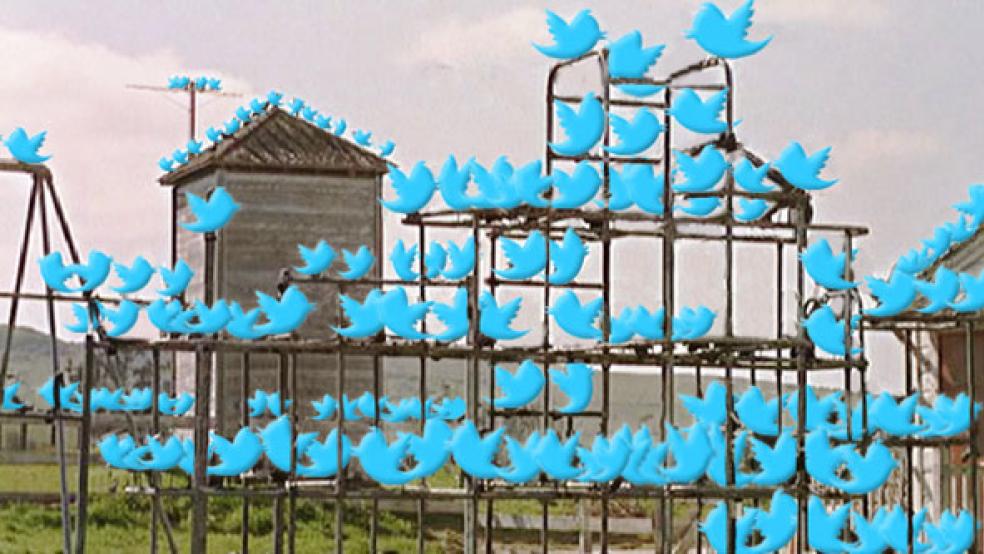While some of President Trump’s executive orders have stirred debate in the initial weeks of his administration, it’s his tweets that have generated the most controversy. Using Twitter to accuse former President Obama of ordering a wiretap on Trump Tower during the election is a prime example.
It’s somewhat ironic then that a series of internal directives issued just after Trump took office were aimed at limiting communications from some U.S. government agencies to the outside world. Interestingly — especially coming from a president who takes to Twitter every chance he gets — these directives covered not only communications like press releases, but also blog posts and the use of social media.
In response, one former Obama administration official said this was “a dark time” at federal agencies. Another pundit stated Trump was “at war with science.” Some agencies even “went rogue” by creating unofficial Twitter accounts in defiance of the Trump administration.
Related: Glued to the TV, Apparently, Trump Fires a Tweet Into the Comey Hearing
Despite the outcry, there are some very sensible reasons for limiting certain types of government communications, especially with respect to the use of social media. Of course, communication between agencies and the public is critical in order to maintain transparency. Clear communication is also needed to educate the public about programs to enhance their effectiveness. However, there's a fine line between providing useful information to the public and engaging in acts of political advocacy. Even more concerning is that social media can give regulators an end-run around the checks and balances of the regulatory process.
The Administrative Procedure Act (APA) of 1946 set up a predictable process whereby agencies notify the public about new rules, and the public has an opportunity to give comments before a rule becomes law. Unfortunately, regulatory agencies routinely circumvent APA procedural requirements. Roughly half of all regulations between 1995 and 2012 avoided the notice-and-comment process altogether.
Even worse, regulators can also influence the public’s behavior in ways virtually identical to regulation without ever issuing a formal rule. These actions are what John D. Graham, dean of the School of Public and Environmental Affairs at Indiana University, and I refer to as “stealth regulation,” and the government’s use of social media is one form.
Related: Here’s Who Wins With Trump’s Order to Slash Regulations
Perhaps the most common form of stealth regulation is the issuance of guidance documents and other policy memoranda. While usually not legally binding on the public, these documents can be binding with respect to government workers, making them powerful tools for implementing policy changes. Some of the most controversial actions of the Obama administration came in this form, from limiting deportations of illegal aliens to prompting schools to allow transgender students to use the bathroom of their choice.
Whether or not one agrees with the policies themselves, it’s highly problematic when sweeping government actions receive no public input, no analysis from technical experts and escape the rulemaking procedures that both political parties have accepted and adhered to for decades.
Columbia Law Professor Tim Wu argues that agencies should also use threats, another form of stealth regulation, as a policy tool, especially in instances where an industry is undergoing rapid change, for example, from emerging technologies. But the threat of actions by the government against private citizens can be enough to ruin lives. Threats to retailers from the Consumer Product Safety Commission helped put the popular office-magnet company Buckeyballs out of business. And, yes, threats can come via tweets. Trump himself has demonstrated a dangerous tendency towards singling out individual companies on Twitter, especially those thinking about shifting jobs to other countries.
Related: This Big Washington Battle Could Hit You in the Wallet
In 2014, the EPA worked with the Sierra Club to promote a clean water regulation on Facebook and Twitter, employing a controversial online tool known as Thunderclap to reach hundreds of thousands of people and encourage them to comment on the proposed rule. In Congressional testimony, the EPA administrator would cite comments from the public as evidence of public support for the policy, but a Government Accountability Office report later determined that the EPA had violated anti-propaganda laws with its actions.
None of this is to say that regulators, or the president, should be completely banned from using social media. Some communications are clearly beneficial. However, the line between providing beneficial information to the public and engaging in political advocacy, outright propaganda or threats is rapidly blurring in this new digital age.
Ironically, one way to rein in abusive government use of social media may be to have the government write updated guidelines on the topic. The Office of Management and Budget is the logical agency to do this; it already writes guidelines for countless other regulatory agency functions. Such guidance should be published publicly in draft form in the Federal Register, it should be subject to rigorous third party review (perhaps from the National Academy of Sciences) and the public should have adequate time to comment on the guidelines.
Related: Trump’s Golden Opportunity: Slashing 179,000 Pages of Federal Regulations
The role of social media in society is still playing itself out, just as the president himself is using social media in novel and unprecedented ways. There are both pros and cons to these developments. Guidelines for social media use could go a long way toward establishing norms in this area, with respect to the federal government. It would help limit those cases where a tweet becomes more than a tweet — when it becomes stealth regulation.
— James Broughel is a research fellow with the Mercatus Center at George Mason University, where he focuses on federal, state and local regulation.





